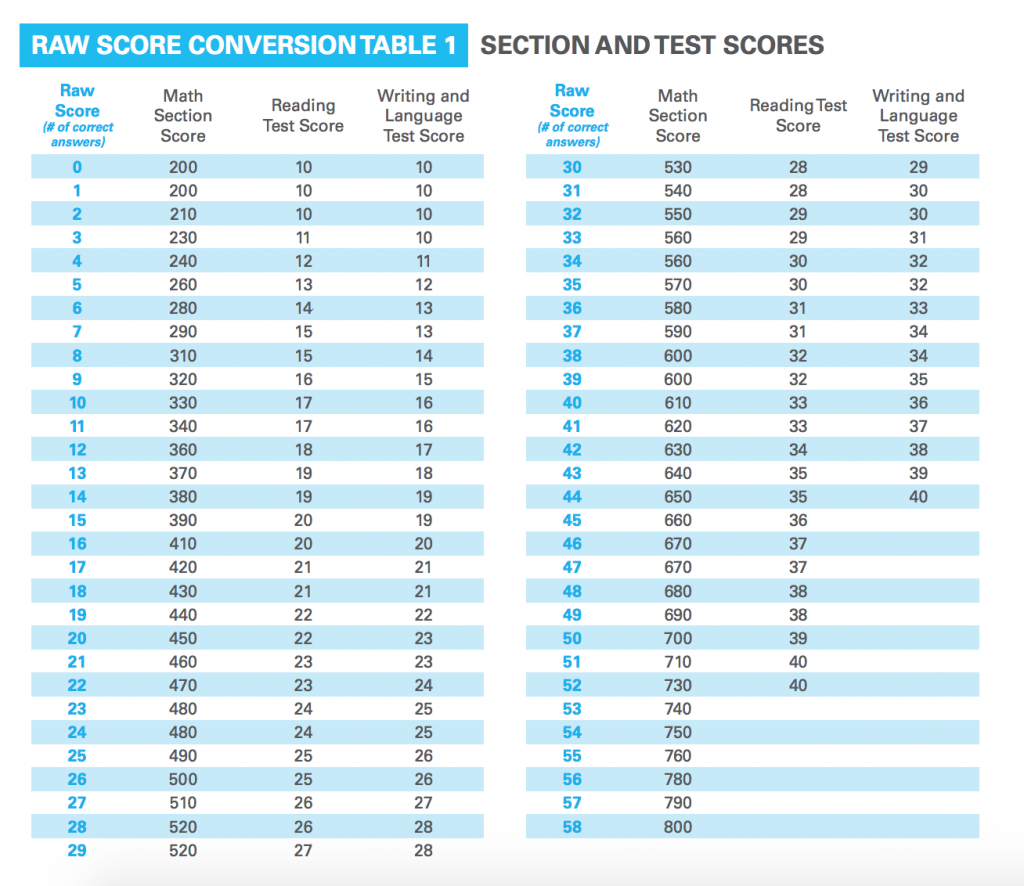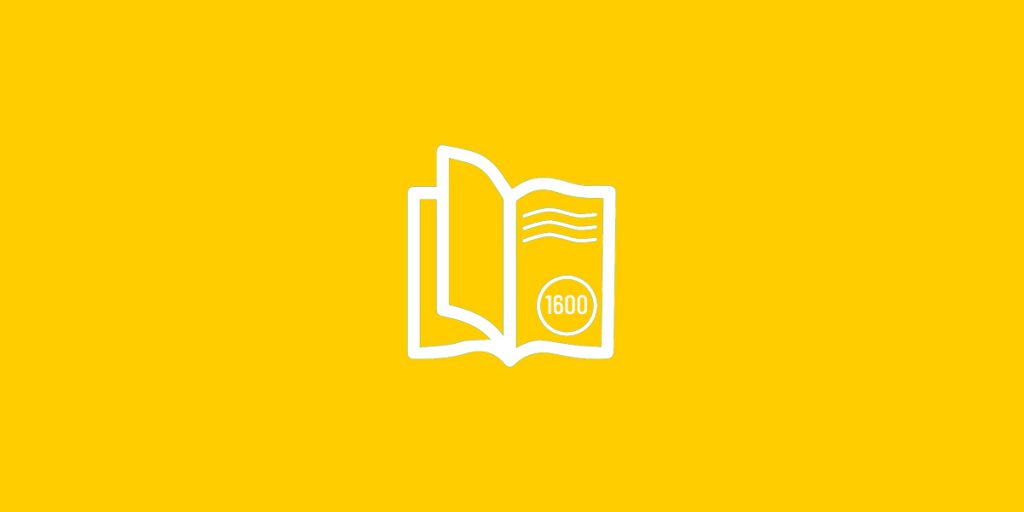Between raw scores, scaled scores, and total scores, figuring out how the SAT is scored can be tough. In this post, we’re breaking down the SAT’s overall scoring structure, how the SAT calculates scores, and how to use this information to your advantage.
How is the SAT Scored?
When you get your SAT score report in the mail or online, you’ll see one number bigger than the others. This is your total SAT score. Your total SAT score is out of 400-1600. This is the score students talk about the most – if your friend says “I got a 1310 on the SAT,” they’re bragging about their total SAT score.
Your total SAT score is formed by adding up your two section scores, Evidence-Based Reading and Writing and Math, which are scored out of 200-800. Sometimes colleges will look at your section scores in addition to your total score (they are all listed on the same score report) to evaluate your performance in a certain area. For example, and engineering school may value a high Math section score over a high Evidence-Based Reading and Writing score.
If you take the SAT essay (discontinued in January 2021), you get three essay scores ranging from 2-8.
| Total SAT score | 400–1600 |
| Evidence-Based Reading and Writing Section | 200–800 |
| Math Section | 200–800 |
| SAT Essay (discontinued in January 2021) | 2-8 |
How is Your SAT Score Calculated?
To calculate your SAT score, the College Board converts your raw score for a section — the number of questions you got right in that section — into the “scaled score” for that section using a conversion chart unique to each test. Then they add these scaled scores together to calculate your total SAT score.
The College Board converts your raw score into a scaled score with a conversion chart unique to each test because each SAT test is unique. They scale the scores to reflect the difficulty of the test. On a very difficult test, students may be able to miss a question or two and still get a perfect 800. But on an easier test, missing just one question could drop your score down to a 790 or 780.
The College Board provides instructions on how to calculate your section scores, including a sample conversion chart, in their Scoring Your Practice Test documentation. You can see a sample chart below:

Via Scoring Your Practice Test
Here are the College Board’s SAT scoring instructions:
Calculate your SAT Evidence-Based Reading and Writing Section score (it’s on a scale of 200–800) by first determining your Reading Test score and your Writing and Language Test score. Here’s how:
- Count the number of correct answers you got on Section 1 (the Reading Test). There is no penalty for wrong answers. The number of correct answers is your raw score.
- Go to Raw Score Conversion Table 1: Section and Test Scores on page 7. Look in the “Raw Score” column for your raw score, and match it to the number in the “Reading Test Score” column.
- Do the same with Section 2 to determine your Writing and Language Test score.
- Add your Reading Test score to your Writing and Language Test score.
- Multiply that number by 10. This is your Evidence-Based Reading and Writing Section score.
To calculate your SAT Math Section score (it’s on a scale of 200–800):
- Count the number of correct answers you got on Section 3 (Math Test — No Calculator) and Section 4 (Math Test — Calculator). There is no penalty for wrong answers.
- Add the number of correct answers you got on Section 3 (Math Test — No Calculator) and Section 4 (Math Test — Calculator).
- Use Raw Score Conversion Table 1: Section and Test Scores to turn your raw score into your Math Section score.
Via Scoring Your Practice Test
Once you have your Math section score and your Evidence-Based Reading and Writing score, add them together. This is your total SAT score!
How to Use SAT Scoring Information While Studying
You can use information about the SAT’s scoring practices when creating test-day strategies. Now, because the College Board scales scores differently for every test you can’t know for sure exactly how your test will be scored. But you can set reasonable goals and make test day less stressful by having a general understanding of how the SAT is scored.
What to Bring to the SAT: SAT Day Checklist
For example, if you know about how many questions you can miss and still achieve your goal score, then if a few questions on test day leave you stumped, you won’t need to feel stressed because you planned for this! You knew you could miss a few questions and still get the score you wanted. So suddenly, those tricky questions just become the few questions you planned to miss!
This same concept applies to raising your score. If you want to raise your Math score by 100 points, you could look at the conversion chart and see that you’d need to answer about 11 more math questions correctly to raise your score by 100 points. Doesn’t getting 11 questions correct sound much more achievable than the vague “100 points?”
Now that you know how the SAT is scored, it’s time to start studying. Check out other SAT resources here on the blog, or head to www.olive-book.com to enroll in our animated, online SAT class.
